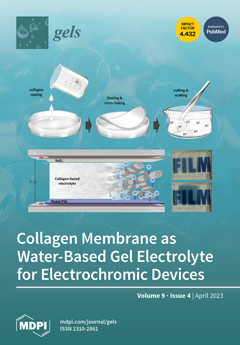There are many different infections and factors that can lead to skin illnesses, but bacteria and fungi are the most frequent. The goal of this study was to develop a hexatriacontane-loaded transethosome (HTC-TES) for treating skin conditions caused by microbes. The HTC-TES was
[...] Read more.
There are many different infections and factors that can lead to skin illnesses, but bacteria and fungi are the most frequent. The goal of this study was to develop a hexatriacontane-loaded transethosome (HTC-TES) for treating skin conditions caused by microbes. The HTC-TES was developed utilizing the rotary evaporator technique, and Box–Behnken design (BBD) was utilized to improve it. The responses chosen were particle size (nm) (Y1), polydispersity index (PDI) (Y2), and entrapment efficiency (Y3), while the independent variables chosen were lipoid (mg) (A), ethanol (%) (B), and sodium cholate (mg) (C). The optimized TES formulation with code F1, which contains lipoid (mg) (A) 90, ethanol (%) (B) 25, and sodium cholate (mg) (C) 10, was chosen. Furthermore, the generated HTC-TES was used for research on confocal laser scanning microscopy (CLSM), dermatokinetics, and in vitro HTC release. The results of the study reveal that the ideal formulation of the HTC-loaded TES had the following characteristics: 183.9 nm, 0.262 mV, −26.61 mV, and 87.79% particle size, PDI, and entrapment efficiency, respectively. An in vitro study on HTC release found that the rates of HTC release for HTC-TES and conventional HTC suspension were 74.67 ± 0.22 and 38.75 ± 0.23, respectively. The release of hexatriacontane from TES fit the Higuchi model the best, and the Korsmeyer–Peppas model indicates the release of HTC followed a non-Fickian diffusion. By having a higher negative value for cohesiveness, the produced gel formulation demonstrated its stiffness, whereas good spreadability indicated better gel application to the surface. In a dermatokinetics study, it was discovered that TES gel considerably increased HTC transport in the epidermal layers (
p < 0.05) when compared to HTC conventional formulation gel (HTC-CFG). The CLSM of rat skin treated with the rhodamine B-loaded TES formulation demonstrated a deeper penetration of 30.0 µm in comparison to the hydroalcoholic rhodamine B solution (0.15 µm). The HTC-loaded transethosome was determined to be an effective inhibitor of pathogenic bacterial growth (
S. aureus and
E. coli) at a concentration of 10 mg/mL. It was discovered that both pathogenic strains were susceptible to free HTC. According to the findings, HTC-TES gel can be employed to enhance therapeutic outcomes through antimicrobial activity.
Full article






